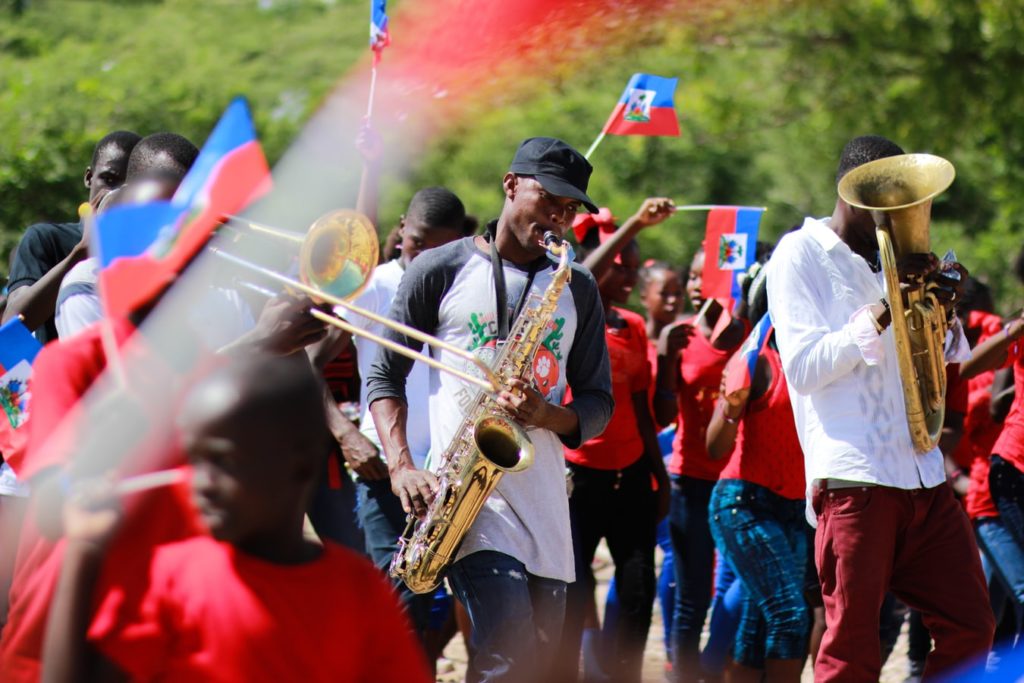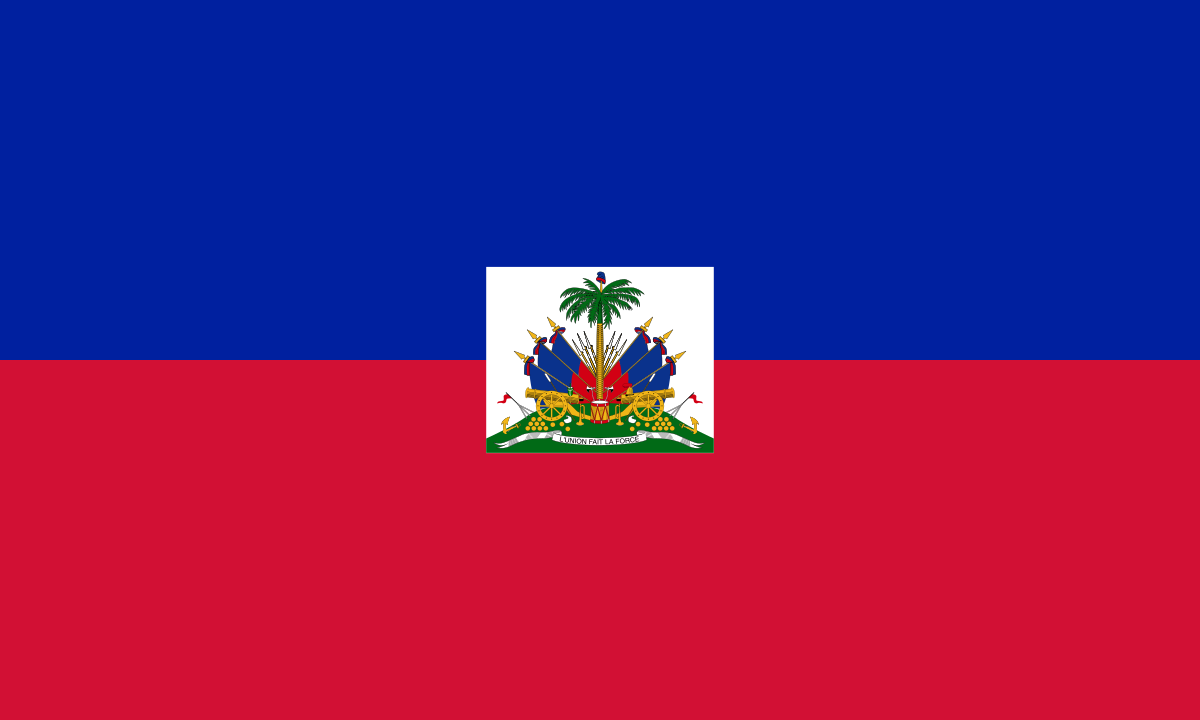
Haitian music combines a wide range of influences drawn from the many people who have settled on this Caribbean island. It reflects French, African rhythms, Spanish elements and others who have inhabited the island of Hispaniola and minor native Taino influences. Styles of music unique to the nation of Haiti include music derived from Vodou ceremonial traditions, rara parading music, twoubadou ballads, mini-jazz rock bands, rasin movement, hip hop kreyòl, the wildly popular compas, and méringue as its basic rhythm.
Very popular today is compas, short for compas direct, made popular by Nemours Jean-Baptiste, on a recording released in 1955. The name derives from compás, the Spanish word meaning rhythm or tones. It involves mostly medium-to-fast tempo beats with an emphasis on electric guitars, synthesizers, and either a solo alto saxophone, a horn section or the synthesizer equivalent. In Creole, it is spelled as konpa dirèk or simply konpa. It is commonly spelled as it is pronounced as kompa.
Dancing is an important part of Haitian life. In the case of Vodou, the religious experience of spirit possession is usually accompanied by dancing, singing, and drumming. Carnival and rara celebrations feature exuberant dancing and movement in the streets. Dancing is also a social activity, used for celebrations such as church socials and informal parties, as well as evenings out with friends. In small restaurants, social dance music is provided by relatively small twoubadou groups, while larger clubs with big dance floors often feature dance bands reminiscent of the American big bands in size. Social dance music has been one of the most heavily creolized music forms in Haiti. European dance forms such as the contradanse (kontradans), quadrille, waltz, and polka were introduced to white planter audiences during the colonial period. Musicians, either slaves or freed people of color, learned the European dance forms and adapted them for their own use. One of the most popular African-influenced dance styles was the méringue (mereng in Creole). Along with the carabinier, the méringue was a favorite dance style of the Haitian elite and was a regular feature at elite dances. The Haitian expression, Mereng ouvri bal, mereng fème ba; (The mereng opens the ball, the mereng closes the ball) alludes to the popularity and ubiquity of the méringue as an elite entertainment. In nineteenth-century Haiti, the ability to dance the méringue, as well as a host of other dances, was considered a sign of good breeding. Like other creolized dance styles, the méringue was claimed by both elite and proletarian Haitian audiences as a representative expression of Haitian cultural values.
Source: Wiki

